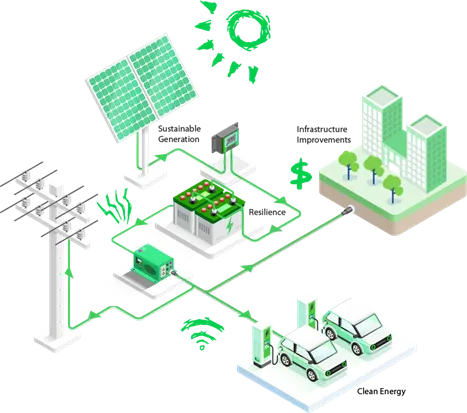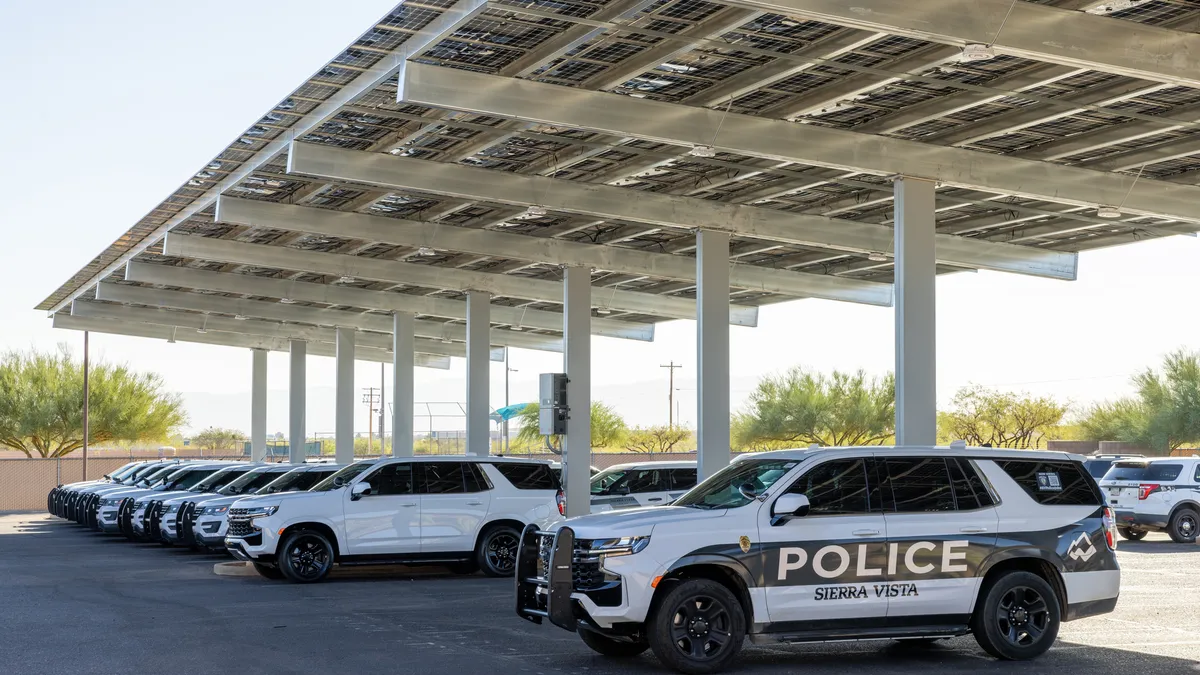New federal funding opportunities are making it more financially viable for municipalities to transition to a clean energy economy, utilizing solar power and other renewable technologies. In particular, the Inflation Reduction Act (IRA) now allows non-taxpaying entities to apply the Investment Tax Credit (ITC) towards solar, battery storage, and other clean energy technologies for the first time via a new direct-pay provision.
Local governments are already capitalizing on the advantages of this pivotal tax credit to build high-impact solar projects, demonstrating how government leaders can seize this unique opportunity to create long-term environmental benefit, economic growth, and climate resilience.
ITC Breakdown: How the Direct Pay Option Works
The IRA now makes the ITC available to school districts, local and state government agencies, and other public entities. These organizations can apply through the IRS to receive a direct tax credit of up to 30% (or more!) for installing onsite solar.
- Specifically, the ITC is a dollar-for-dollar tax credit that is based on the taxpayer’s basis in eligible property—i.e. the expense of acquiring and constructing eligible property for clean energy-related technologies.
- Instead of requiring credits to be subtracted from a tax balance, the IRA allows credits to now be treated as a “direct payment” to receive a cash refund, called the direct pay option.
- Direct pay must be applied for in the same taxable year when the eligible project is placed in service. Once elected, this option applies for the entire tax credit period.
In short, the ITC can dramatically cut the cost of installing sustainable technologies for local government systems. Communities now have an unprecedented opportunity to design and implement solar projects to enable comprehensive energy, infrastructure, sustainability, and resilience strategies that strongly benefit the triple bottom line. Cities like San Antonio, Texas, and Piscataway, New Jersey, have already announced investments in innovative solar energy projects eligible for ITC funding, like solar canopies and floating solar arrays.
Direct Payments are Empowering High-Impact Solar Projects
The opportunity to install solar is bigger than just adding solar panels to a building; the right solar project can be a vehicle to create transformational change. These projects have the potential to dramatically reduce energy costs, spur economic development, and achieve carbon reduction goals.
Direct payments are helping communities finance climate change mitigation and grid resilience projects previously out of reach due to high initial costs. Solar power is also helping local governments decarbonize their operations, increase resiliency against extreme weather events, and provide green job opportunities.

Here are examples of high-impact solar projects from cities Schneider Electric has worked with.
- Jersey City, NJ - In June 2022, Jersey City, New Jersey, embarked on a comprehensive Energy Savings Improvement Plan, which includes energy infrastructure updates, a disaster preparedness strategy, and investment in clean technologies like solar panels and the nation’s first self-sustaining municipal microgrid for resilient power. Solar power, battery storage, a backup generator, and the EV fleet combine to form a microgrid that ensures the city can continue reliable operation for up to 14 days, even if there is a power grid failure. Solar PV panels installed on rooftops and carports provide affordable, clean energy that drives savings, which are being poured into other sustainable investments.
- Canton, Georgia - In September 2023, Canton, Georgia, announced a strategic sustainability and historic preservation program with the help of Schneider Electric that will address critical infrastructure needs in two of the city’s most historic buildings: City Hall (established in 1924) and Public Safety/Municipal Court (established in 1925), ensuring that these buildings will continue to serve the city’s needs while maintaining the historic integrity of downtown Canton. Solutions include a 70kw DC Canton City Hall rooftop solar array that, when combined with the existing solar-covered parking, will result in days when City Hall is 100% solar-powered.
- Montgomery County, Maryland – After a June 2012 derecho — a straight-moving band of storms with sustained, hurricane-strength winds — knocked out power for over a week in parts of the county, Montgomery County officials saw an opportunity to strengthen public infrastructure resilience. The county partnered with Schneider Electric to install an advanced microgrid that powers an electric bus fleet. The Brookville Smart Energy Bus Depot contains a 6.5 MW microgrid with on-site solar, battery energy storage, and natural gas generation. Solar energy services 35% of the microgrid. This solution ensures that buses can operate in the event of a main grid outage, making Montgomery County a leader in fleet electrification and a sustainability archetype for local governments across the country.
Navigating Tax Credits with a Knowledgeable Partner
While the IRA provides unprecedented investment opportunities for clean energy, tax credits can be complicated. However, a knowledgeable partner can help cities navigate ITC requirements, maximize bonus credits, and avoid leaving money on the table.
Working with an expert benefits cities and counties of all sizes. From evaluating project needs to exploring funding opportunities and navigating regulatory complexities, Schneider Electric can help your community maximize project impact while freeing up your team to focus on other priorities. Visit our Solar Impact page to read more stories of our work designing high-impact solar solutions for our local government partners.










